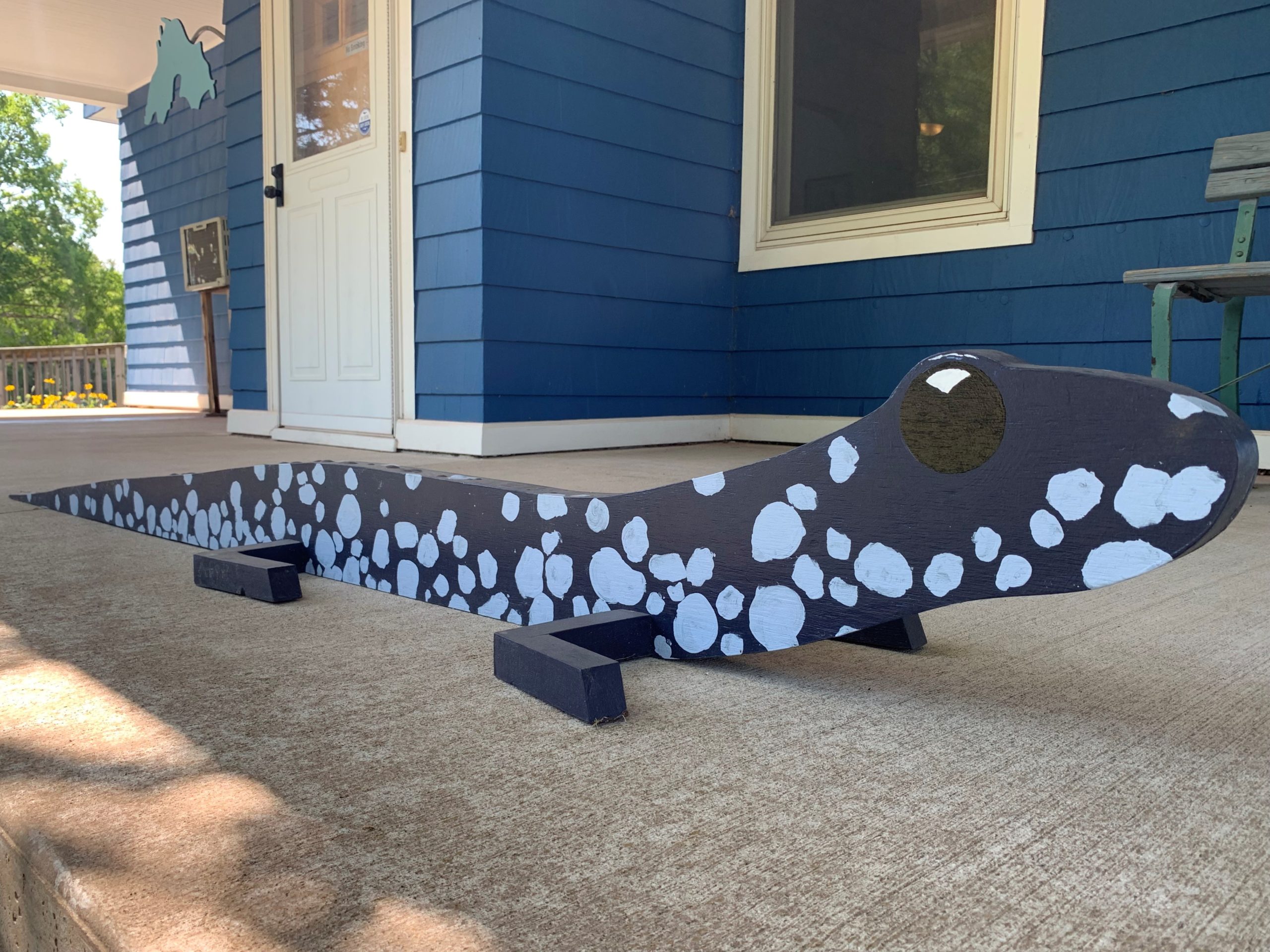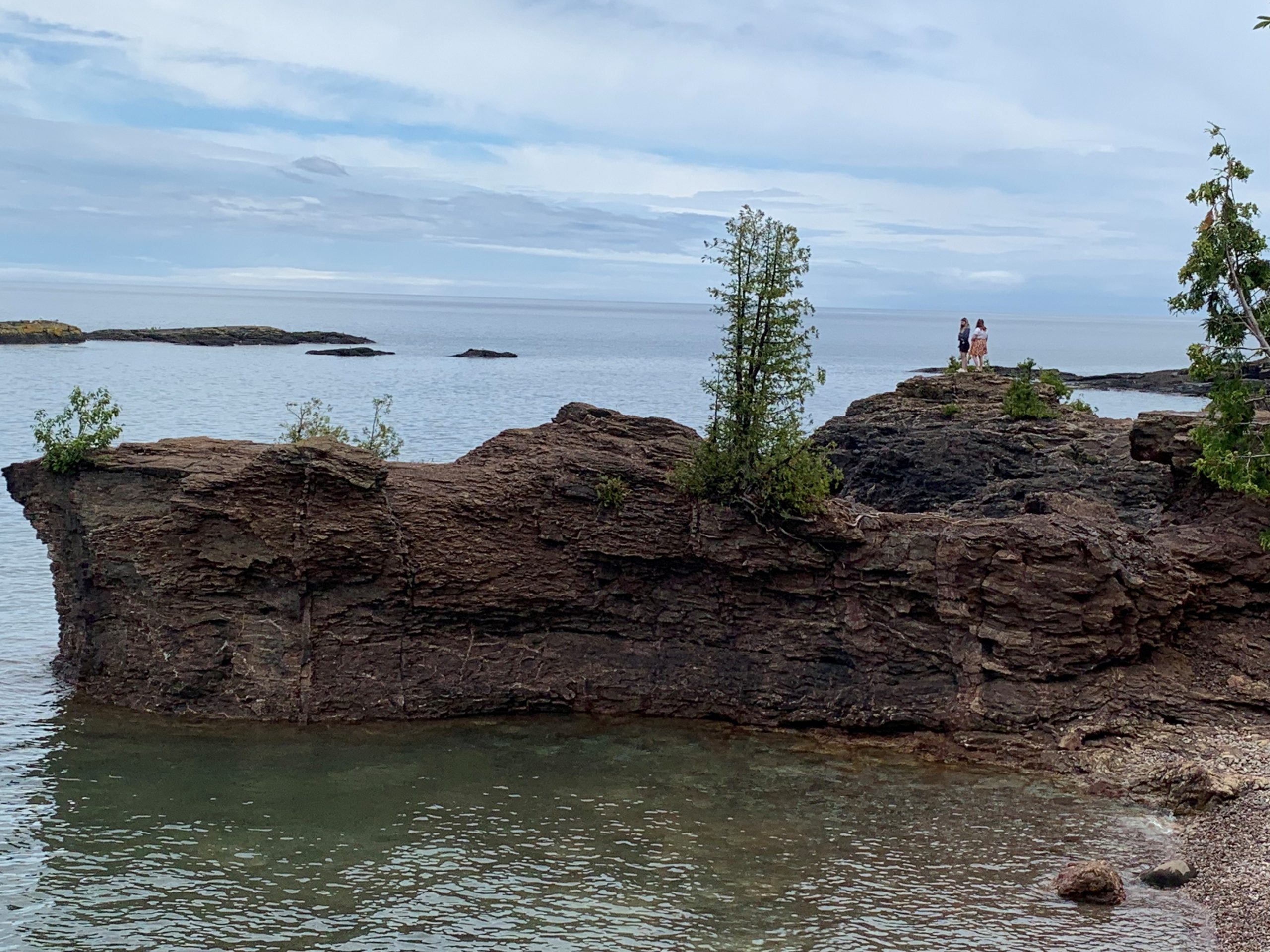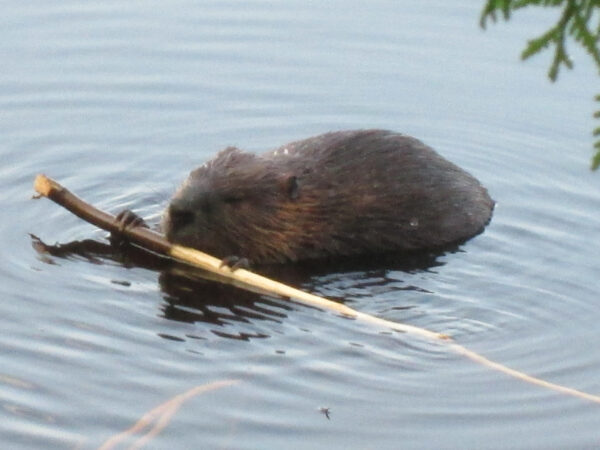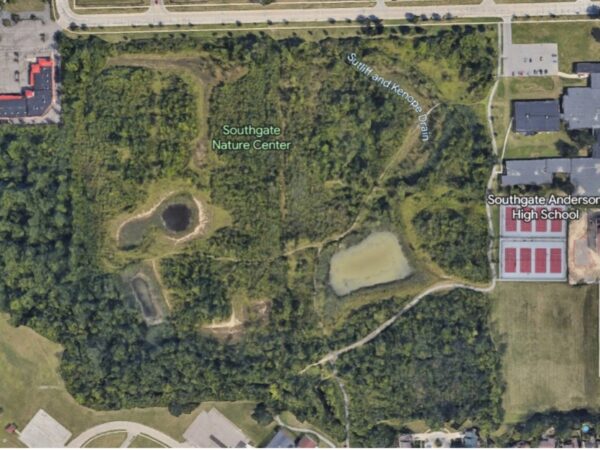
The blue-spotted salamanders have an important mission that takes them across a busy road of a park in Michigan’s Upper Peninsula.
Every spring, the four-legged amphibians emerge from the soil and make their way to a nearby swamp to lay eggs and reproduce. After a few days there, they crawl back home to spend their summer living under logs and eating bugs.
The blue-spotted salamanders were following this same annual routine for thousands of years before Presque Isle Park in Marquette, Michigan became a recreation area. With that came humans with their automobiles, and the spring journey for the blue-spotted salamander suddenly became treacherous.
A few years ago, then-Northern Michigan University biology student Eli Bieri was walking through the woods one night with some fellow students when he saw first the migration and then the deadly clash of nature and humans.
“We were blown away when we saw it, like truly hundreds of salamanders crossing the road at the same time,” Bieri said. “And that was really incredible until a car started coming by and squishing the salamanders.”
It was not a pretty sight. But Bieri merged his observation with his class work to launch a research plan. He found that more than 200 salamanders were being killed each spring by passing cars, which was nearly 20% of the blue-spotted salamander population in Presque Isle Park.
At that rate, the local salamander population would eventually go extinct.
Amphibious Indications
Blue-spotted salamanders play a vital role in the ecosystem of Presque Isle Park, which is located just north of downtown Marquette. It’s a destination for locals and tourists alike with trails, rocky outcroppings and stunning views of Lake Superior.
While people have plenty of outdoor activities while visiting the park, the blue-spotted salamander residents have a simpler existence. They eat insects and are a food source for other animals.
“Foxes, birds, snakes, other amphibians, pretty much everything eats salamanders,” Bieri said.
The salamanders can also provide scientists with a glimpse into the inner workings of the environment at Presque Isle Park. “They’re actually a really good indicator species too, to indicate ecosystem health, because if there’s an issue with the soil or the air or the water, salamanders will be the first to be affected,” Bieri said.

Presque Island Park in Marquette, Michigan. (Photo Credit: Sandra Svoboda/Great Lakes Now)
After seeing the salamander slaughter, Bieri took his findings to Marquette’s City Hall. He persuaded the mayor and city commissioners to shut down the stretch of road in Presque Isle Park while the salamanders cross every spring.
Amphibious Action
The road closure caught the attention of people living in Marquette, and interest grew. Dozens of spectators started coming to the park at night to see the creatures crossing the road.
Then long-time Marquette resident and part-time artist Dan Barrington had an idea: Salamander Days. “What I imagined was like a spring festival, and the salamander would be the centerpiece,” he said.
Earlier this year, Marquette launched “Salamander Days.” Barrington built a couple of plywood salamanders that were on display at City Hall. The now-annual spring event features salamander art, stories and activities for kids and even a locally brewed salamander beer.
Bieri, who is a Fulbright Scholar currently doing research about amphibians in Australia is pleasantly surprised by all the attention the salamanders are getting.
“I think if you’re in Marquette or really anywhere in the Great Lakes region and it’s a warm, rainy spring night, go out with a flashlight and have a look,” he said. “Because you never know what you’re going to find. They’re all around, and it’s totally worth seeing.”
Catch more news at Great Lakes Now:
Genetic Mystery: The all-female salamanders of the Great Lakes
I Speak for the Fish: April showers bring vernal pools and baby salamanders
Featured image: A plywood blue-spotted salamander on display at Marquette City Hall. (Photo Credit: Sandra Svoboda/Great Lakes Now)
1 Comment
-
Oh hey, I wrote a poem about this kinda thing. https://www.meowmeowpowpowlit.com/recent/melt-by-robbie-q-telfer




